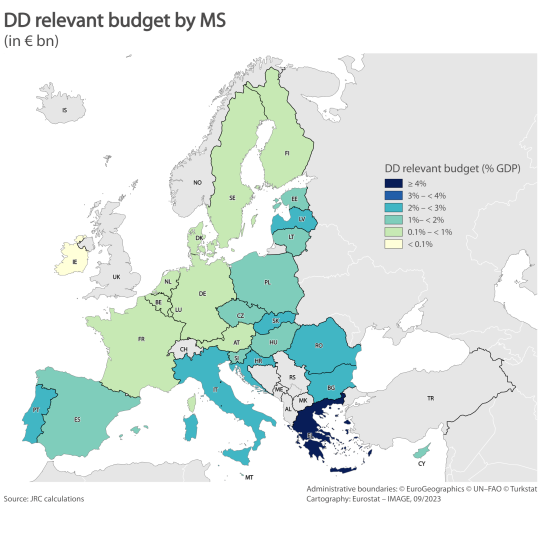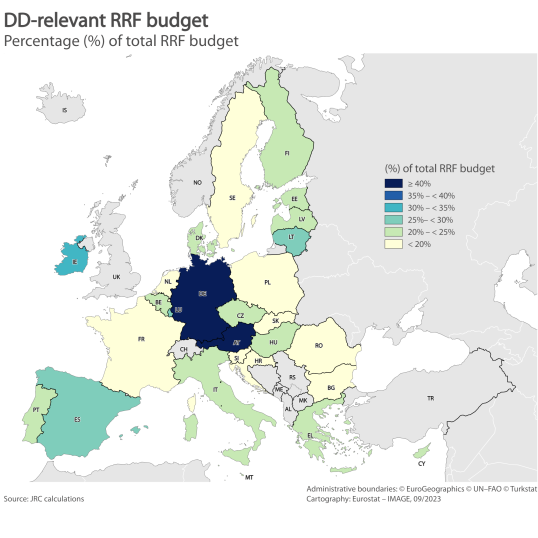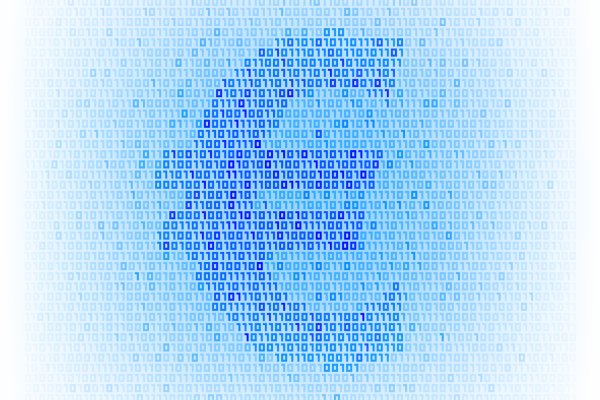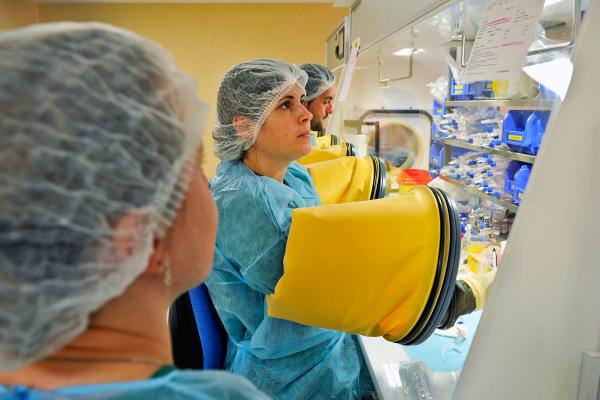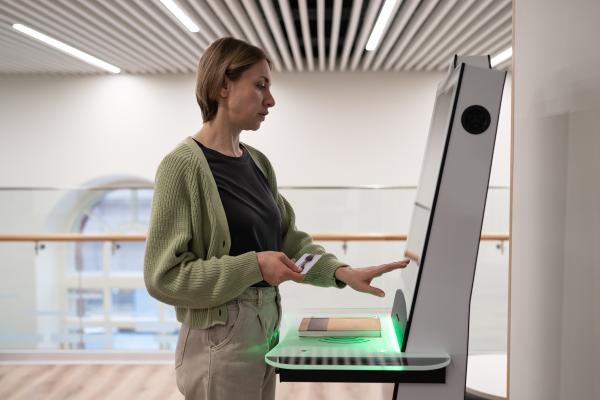
The first State of the Digital Decade report, published today, assesses the current state of the European digital transformation and evaluates the progress towards the 2030 goals set for citizens, business and governments. The Joint Research Centre (JRC) significantly contributed to these efforts with three reports: JRC provided scientific findings and data to support the delivery of Europe's digital transformation, both at European and national level.
JRC methodology as guide for Member States to inform digital transformation
In the digital transformation journey towards 2030, the Commission offers guidance to Member States to successfully advance towards the jointly agreed targets, and for the preparation of their national roadmaps.
In its first report, JRC developed a methodology to estimate the EU trajectories towards the Digital Decade 2030 targets. Member States can use these trajectories as a reference for the estimation of their national ones. How?
The methodology allows to estimate the future evolution of Key Performance Indicators (KPIs) established by the Digital Decade policy programme – from adoption of Artificial Intelligence (AI) or big data to deployment of 5G, from number of ICT specialists in work to the number of small and medium-sized enterprises (SMEs) with a basic level of digitalisation. Using econometric techniques, it is possible to estimate two scenarios for each KPI: the ideal Digital Decade trajectory and the baseline one (or business as usual scenario). The comparison between the two trajectories provides insights into which targets are more likely to be achieved, highlighting gaps and opportunities for evidence-based policy interventions. The results will allow Member States to measure their progress against individual KPIs and strategically inform national roadmaps.
Europe allocates €165 billion to reach the Digital Decade objectives
JRC second report maps EU investments in the Digital Decade objectives and their allocation along all Digital Decade targets. The analysis shows that the main EU level funding instruments provide more than €165 billion to support Digital Decade objectives, marking an unprecedented investment in digitalisation.
Interestingly enough, the mapping shows that 65% of digital funding is allocated to the digitalisation of the public sector and businesses (two of the four cardinal points on which the Digital Decade policy programme is based). Also, among the funding instruments, the Recovery and Resilience Facility (RRF) is the main source of public funding, providing over 70% of the funds mapped (€165 billion +).
By analysing the amount of funding directed to each Member State (considering the size of the economy), the study finds that Southern Europe, Eastern Europe and, to a lesser extent, the Balkans, receive the biggest share of Digital Decade relevant budget (FIG 1). On the other hand, the results show a significant variation in efforts among Member States when analysing the share of RRF funding received that are dedicated to the Digital Decade targets. Indeed, Austria and Germany are leading the way, allocating approximately 40% of their national RRF budget in investments in the Digital Decade targets (FIG 2).
Challenges and opportunities for boosting Europe's digital leadership
Finally, the third report of the series offers a comparison between Europe's private investments in several Digital Decade thematic areas and other advanced digital economies: United States, China, the United Kingdom, South Korea, and Japan. The comparative framework is useful to assess and contextualise the EU's state of play in terms of digital investments:
- In the 5G sector, the EU needs to continue its efforts in the semiconductor and fixed broadband coverage to match US investments in telecommunication equipment investment.
- In the field of edge computing, EU firms lead in fixed assets growth, with room for improvements in terms of venture capital funding.
- When it comes to adoption of cloud computing, big data and AI, Chinese firms perform very well in AI-related and big data fixed assets growth: they are investing three and nine times the amount invested by EU firms respectively (taking into account the size of the economy).
In venture capital funding, US companies raise as much as two to eight times the amounts raised by EU firms, depending on the technology (cloud, big data, AI). Also, the US and China have significantly higher revenues in cloud firms, demonstrating their dominance in the cloud market.
Background Information - Policy Context
The Digital Decade Policy Programme 2030 (Decision (EU) 2022/2481) establishes concrete targets and objectives for a successful digital transformation of the EU by 2030.
The policy programme establishes an annual cooperation mechanism to monitor progress on the digital targets and objectives, and calls for the launch of Multi-Country Projects, to channel investments and scaled efforts towards achieving the targets.
Details
- Publication date
- 27 September 2023
- Author
- Joint Research Centre
- JRC portfolios

